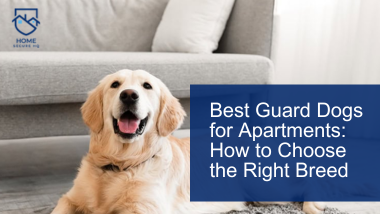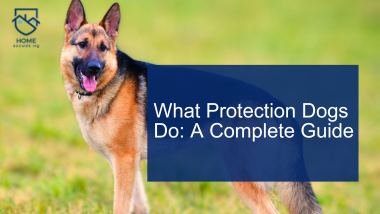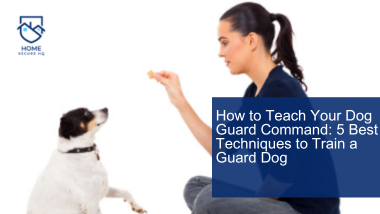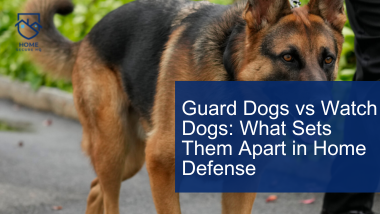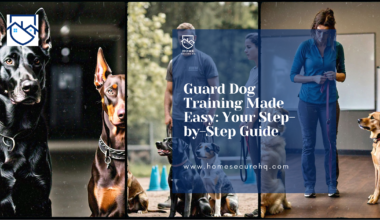Your Home Needs a Protection Dog Now More than Ever!

Are you concerned about the safety of your home and loved ones? With crimes rising, more homeowners are seeking effective ways to secure their properties.
Alarm systems and surveillance cameras are undeniably important, but they often can’t provide the immediate, physical protection needed in critical situations.
And that is where a protection dog comes in. Dogs are more than just pets! They can be highly trained to be a robust addition to your home security plan.
But how do you get started? How do you train a dog for protection?
This article will give you 5 expert dog training tips for protection to tighten your home security
Let’s get right into it!
1. Choose the Right Breed for Protection Training
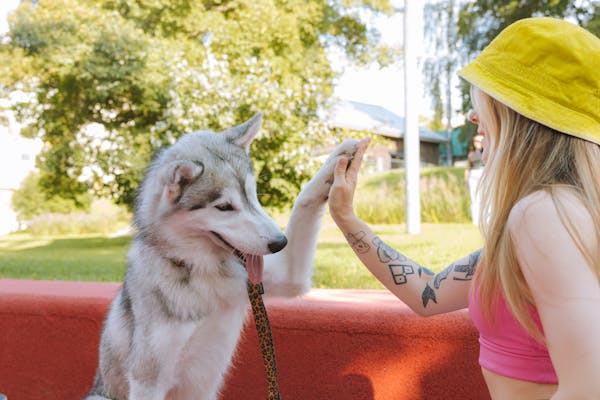
Not all dogs are suitable for protection training.
Any dog can be trained to be a watchful companion; however, certain breeds have natural instincts that make them ideal for protection roles.
Why breed matters:
Some dog breeds are naturally protective and quick to act in situations that threaten their owner or territory.
These dogs are easy to train and respond well to commands. Popular breeds for protection include:
1. German Shepherds:
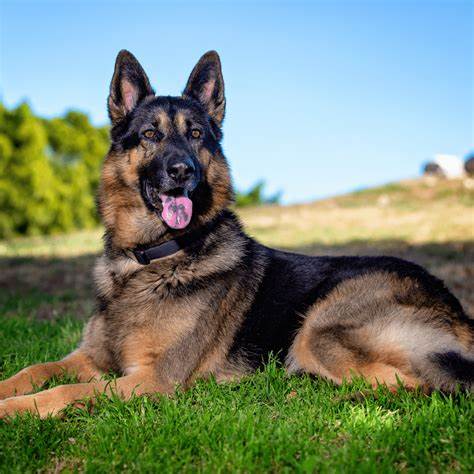
Known for their intelligence, loyalty, and trainability. They’re often used in police and military work due to their alertness and protective instincts.
2. Belgian Malinois:
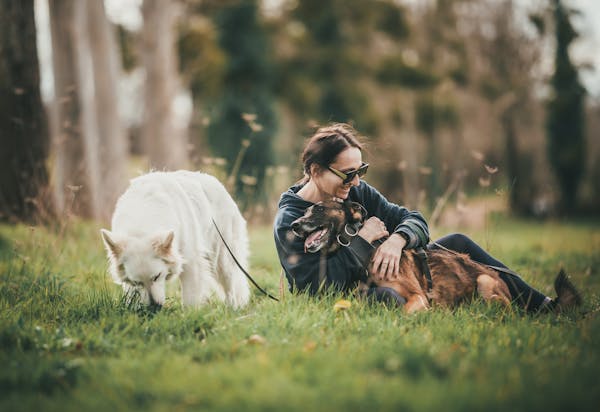
These dogs are agile, smart and alert. They are often used in law enforcement and military roles.
3. Rottweilers:
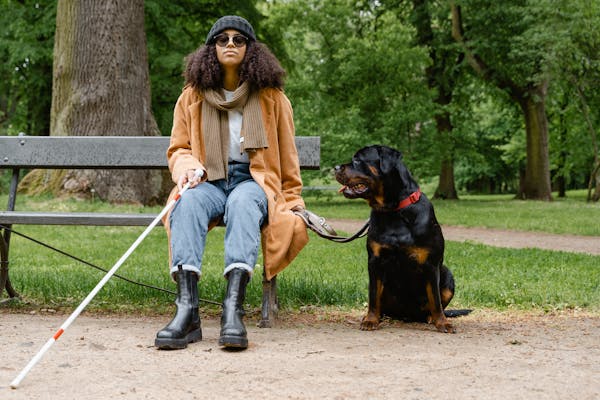
Strong, courageous, and naturally protective, Rottweilers make excellent guard dogs for home protection.
4. Doberman Pinschers: Known for their alertness, intelligence, and loyalty, Dobermans are highly effective at guarding property.
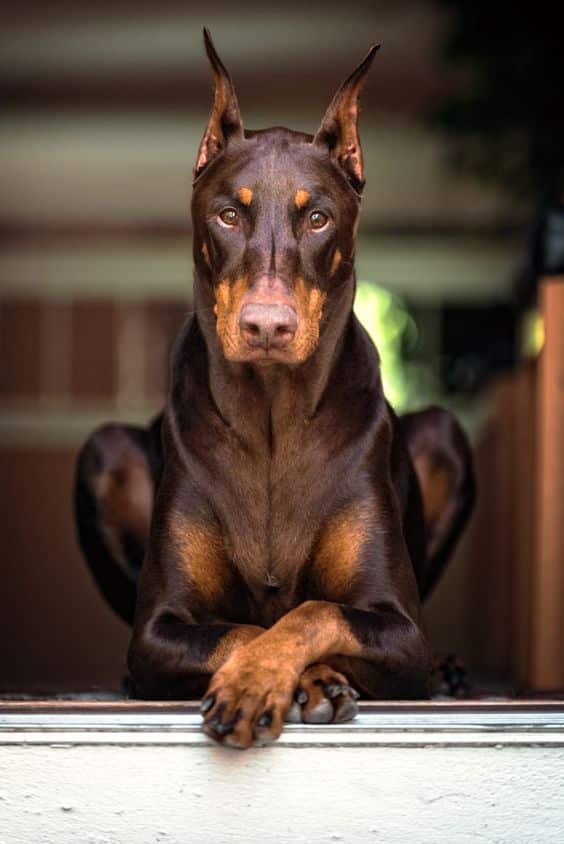
These breeds are generally well-suited for protection work, but it’s important to assess your individual dog’s temperament and readiness for such training.
Not every dog, even within these breeds, is fit for the job, so choosing the right one is essential.
Take Note
When choosing a protection dog, pick a breed known for its protective nature and trainability. This ensures your dog is ready for protection work.
For more on the best breeds for protection, refer to our article on Top Breeds for Guard Dogs and Watch Dogs
2. Start Basic Obedience Training First
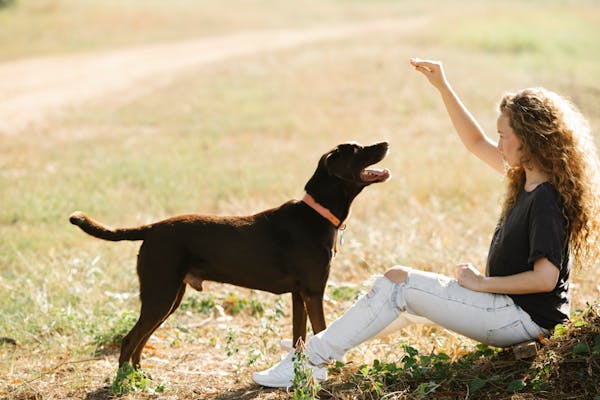
Before starting protection training, your dog needs to learn basic obedience. A dog that doesn’t know basic commands won’t be effective in protection.
Why obedience matters:
Protection training requires a dog to follow commands quickly and accurately, even when it’s hard.
Without basic obedience, your dog might not know when to act or when to stay calm. This could lead to confusion or unsafe reactions.
A well-trained dog knows when to act and when to stay calm. This is crucial for protection training.
How to get started:
Start with basic commands like “sit,” “stay,” and “come.” Use treats and praise to reward your dog.
Keep training sessions short and regular to avoid overwhelming your dog.
Make sure your dog is fully comfortable with basic commands before moving on to more advanced protection training.
Take Note:
A dog that excels in basic obedience will be more confident, responsive and ready for the challenges of protection training.
Lay this foundation before advancing to more complex tasks.
3. Socialize Your Dog for Protection Training
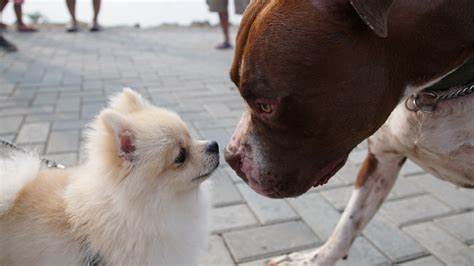
One of the most common mistakes in protection dog training is neglecting socialization.
A dog that is not socialized may become overly aggressive or fearful of people, including family members or visitors.
A well-socialized protection dog is confident and calm, allowing them to differentiate between real threats and normal activities.
Why socialization is essential:
Dogs that are well-socialized are better equipped to handle the demands of protection work.
They can assess a situation calmly and are less likely to react aggressively to non-threatening people or animals.
For a protection dog training, it’s important to ensure that dogs are comfortable in a different environment and around diverse people.
How to socialize your dog:
Expose your dog to different environments, people, and situations from a young age (if possible).
Take them to parks, around other dogs, and into busy urban areas.
Slowly introduce them to new people, rewarding positive interactions with treats and praise.
It’s also important to familiarize your dog with different sounds, like traffic or sirens, to help them remain calm in potentially distracting situations.
Take Note:
Socialization ensures that your protection dog is not overly fearful or aggressive, helping them stay focused on the task when needed.
A well-socialized dog will provide protection confidently and safely.
4. Introduce Controlled Aggression Training
The next is controlled aggression. It is one of the most important dog training tips.
Here, your dog learns to respond decisively to a perceived threat but still has the ability to control their aggression when given a command.
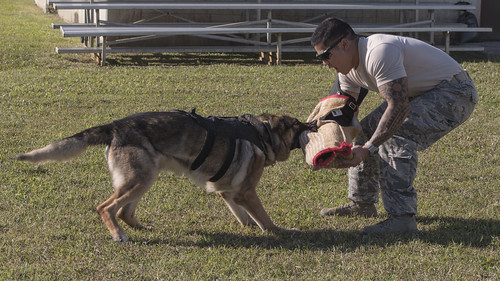
Here, your dog learns to respond decisively to a perceived threat but still has the ability to control their aggression when given a command.
Achieving this balance is crucial, as unchecked aggression can result in dangerous situations.
Why controlled aggression matters:
Your protection dog must understand when to be aggressive and when to hold back.
If a potential intruder poses a genuine threat, your dog needs to act decisively.
However, they should also be able to stop the aggression on command when the situation is resolved.
These dog training tips prevents the dog from becoming a liability, ensuring they can act when necessary but also maintain control in other situations.
How to train controlled aggression:
Work with a professional dog trainer who specializes in protection or bite work.
Controlled aggression training often involves equipment like bite sleeves or padded suits, teaching the dog to release their grip when given a command.
This type of training should always be conducted under the guidance of an experienced trainer to ensure the safety of both the dog and handler.
Take Note:
Controlled aggression dog training tips gives your dog the ability to assess threats and respond appropriately, without becoming overly aggressive in normal situations.
This is a crucial skill for any protection dog.
5. Solidify Protection Training with Actual Scenarios
Once your dog has mastered the basics of obedience, socialization, and controlled aggression, it’s time to put these skills to the test.
Solidifying protection training with actual scenarios is an essential dog training tips to ensure your dog is prepared for any situation that might arise.
Why practical scenarios matter:
In an actual home intrusion situation, your dog must be able to assess a threat quickly and react accordingly.
Training in controlled environments, like a training yard, may not fully replicate the chaos and stress of an actual emergency.
These dog training tips simulate practical situations to help your dog sharpen their response to threats.
How to conduct scenario-based training:
Work with a professional trainer to simulate home invasion scenarios.
For example, have a “stranger” (someone wearing a disguise or protective gear) attempt to enter your home as your dog is trained to defend the property.
Introduce distractions, such as loud noises or other stimuli, to ensure your dog remains focused.
You can also practice with an intruder mock-up to test your dog’s reaction in actual situations.
Take Note:
Simulating practical situations ensures that your protection dog is ready for anything.
Regularly practice these scenarios to maintain your dog’s sharpness and confidence in their protection role.
Conclusion
Protection dogs can be an invaluable asset to your home security plan, providing a level of protection that alarm systems and surveillance cameras often can’t match.
These expert dog training tips: choosing the right breed, starting with basic obedience training, ensuring proper socialization, introducing controlled aggression, and reinforcing training with real-world scenarios will prepare your dog to effectively safeguard your family.
However, it’s important to remember that implementing dog training tips is a process that requires time, patience, and professional guidance to ensure the safety of both your dog and family.
Take the first step toward strengthening your home security today.
Begin by researching the best protection dog breeds for your needs and consider partnering with an experienced trainer to guide you through the process.
Home Secure HQ is here to help with expert advice on your home security needs.

